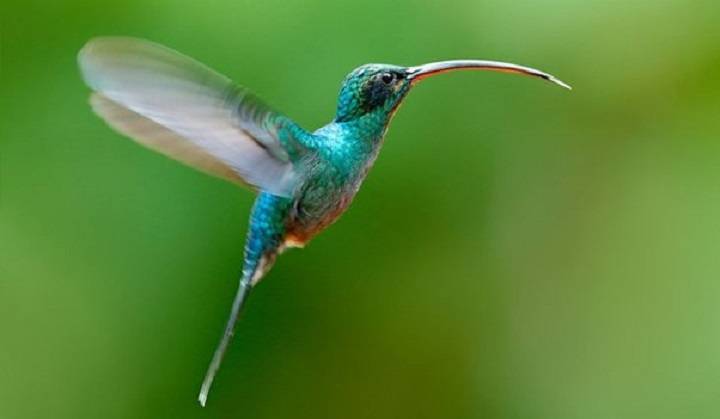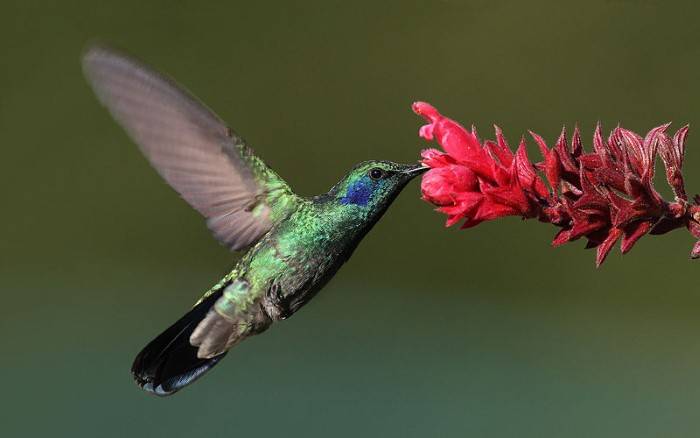Among the myriad wonders of the avian world, few are as captivating as the hummingbird’s ability to fly backward. These tiny dynamos of the sky possess a remarkable repertoire of aerial maneuvers, including the ability to hover, dart, and even fly in reverse. In this comprehensive guide, we delve into the fascinating phenomenon of backward flight in hummingbirds, exploring the biomechanics, ecological significance, and evolutionary adaptations that enable these feathered marvels to defy gravity and perform astonishing aerial feats.
The Hummingbird’s Unique Flight Abilities
Hovering Mastery:
Hummingbirds are unrivaled masters of hovering, thanks to their unique wing morphology and rapid wingbeat frequency. By generating lift on both the upstroke and downstroke of their wings, hummingbirds can remain stationary in mid-air, hovering effortlessly while probing flowers for nectar.
Reverse Flight:
Unlike most birds, which rely on forward motion to generate lift, hummingbirds have the remarkable ability to fly backward by reversing the direction of their wingbeats. This backward flight enables hummingbirds to navigate tight spaces, evade predators, and access hard-to-reach nectar sources with remarkable agility and precision.
Biomechanics of Backward Flight
Wing Morphology:
The unique shape and flexibility of a hummingbird’s wings play a crucial role in its ability to fly backward. Unlike the rigid wings of many bird species, hummingbird wings are highly flexible and can rotate almost 180 degrees, allowing for rapid changes in direction and thrust during backward flight.
Muscle Power:
Hummingbirds possess exceptionally strong flight muscles relative to their body size, enabling them to execute rapid wingbeats and quick changes in flight direction. These specialized muscles provide the power and agility necessary for sustained backward flight maneuvers.
Ecological Significance of Backward Flight
Foraging Efficiency:
Backward flight allows hummingbirds to access nectar from flowers that are inaccessible to other pollinators, such as deep-throated blossoms or flowers with narrow openings. By hovering and flying in reverse, hummingbirds can extract nectar with remarkable precision, maximizing their foraging efficiency.
Predator Avoidance:
In addition to enhancing foraging capabilities, backward flight also serves as a defensive mechanism against predators. When threatened, hummingbirds can quickly reverse direction and fly backward, confusing predators and making it difficult for them to anticipate the hummingbird’s movements.
Evolutionary Adaptations
Specialized Feeding Strategies:
The ability to fly backward has likely evolved as an adaptation to the unique feeding habits of hummingbirds. By exploiting nectar-rich flowers that are inaccessible to other birds, hummingbirds have carved out a specialized niche in the ecosystem, relying on their agility and versatility to thrive in diverse habitats.
Co-evolution with Flowers:
The evolution of backward flight in hummingbirds is closely intertwined with the co-evolutionary relationship between hummingbirds and their floral food sources. As hummingbirds evolved specialized beaks and tongues for nectar feeding, flowers adapted to attract hummingbirds through bright colors, sweet nectar rewards, and specialized floral structures.
Challenges of Backward Flight
Energy Expenditure:
While backward flight offers many advantages, it also requires significant energy expenditure due to the increased drag and turbulence generated by flying against the direction of airflow. To compensate for this energy cost, hummingbirds must consume large quantities of nectar to fuel their high metabolic demands.
Navigational Complexity:
Flying backward presents unique navigational challenges for hummingbirds, requiring precise coordination of wingbeats, body movements, and visual cues to maintain stability and avoid collisions. Despite these challenges, hummingbirds have evolved sophisticated sensory and motor capabilities to excel in the aerial realm.
This Bird Can Fly Backwards
Conservation Implications
Habitat Preservation:
Protecting the diverse habitats where hummingbirds reside is essential for preserving their unique adaptations, including backward flight. By conserving natural areas, planting native flowers, and reducing habitat fragmentation, we can ensure the long-term survival of hummingbird populations and their ecological interactions.
Climate Change Impact:
Climate change poses a threat to hummingbirds and their habitats, potentially altering the distribution of nectar-producing flowers and disrupting migratory patterns. Monitoring hummingbird populations and implementing conservation measures are crucial for mitigating the impacts of climate change on these iconic avian species.
Related Post:
Cracking the Mystery: How Long Does It Take for Duck Eggs to Hatch?
Unlocking the Egg-Laying Mystery: When Do Ducks Start Laying Eggs?
Choosing the Perfect Pet Duck: A Comprehensive Guide
The ability of hummingbirds to fly backward represents a remarkable feat of evolution and adaptation, showcasing the extraordinary capabilities of these diminutive yet mighty birds. By unraveling the biomechanical principles, ecological significance, and evolutionary adaptations underlying backward flight, we gain a deeper appreciation for the intricate interplay between form and function in the natural world. As we marvel at the aerial acrobatics of hummingbirds, let us also reaffirm our commitment to conserving their habitats and safeguarding the biodiversity of our planet for future generations to enjoy.




